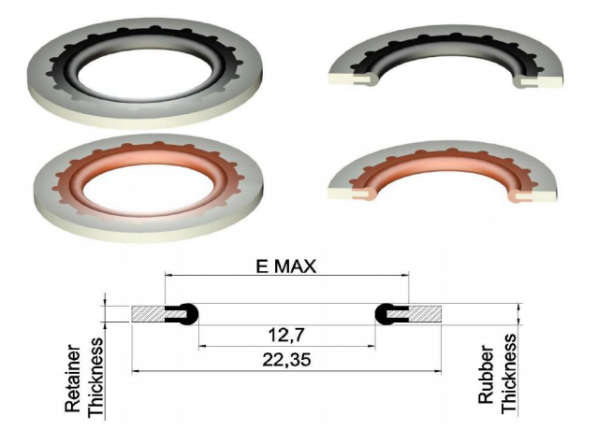o ring types
Understanding O-Ring Types A Comprehensive Guide
O-rings are essential components in various industries, serving as seals to prevent the leakage of fluids or gases between parts in machinery and equipment. Their simple design—a loop of elastomeric material—belies their critical role in ensuring the efficiency and safety of countless applications. Understanding the different types of O-rings is crucial for selecting the right type for specific needs.
1. Material Types
O-rings are made from a variety of materials, each with unique properties suitable for different environments
- Nitrile (NBR) This is one of the most common materials used for O-rings. It offers excellent resistance to oils and fuels, making it ideal for automotive and industrial applications. However, NBR has limited resistance to high temperatures and ozone.
- Fluoroelastomer (Viton) Known for its superior chemical resistance, Viton is suitable for harsh environments, especially in the petroleum and chemical industries. It can withstand high temperatures and is resistant to a broad range of chemicals.
- Silicone Silicone O-rings are flexible and can operate at extreme temperatures, from -100°F to 500°F (-73°C to 260°C). They are commonly used in food processing, medical devices, and applications where flexibility is critical.
- EPDM Ethylene Propylene Diene Monomer O-rings excel in outdoor applications due to their excellent resistance to weather, ozone, and UV radiation. They are commonly used in plumbing and roofing applications.
2. Size and Standardization
o ring types

O-rings come in various sizes, and standardization helps in their selection and replacement. The most commonly used sizing systems are
- AS568 This is the most widely recognized standard in the United States, specifying the dimensions of O-rings by their inside diameter and cross-sectional thickness.
- ISO 3601 This international standard provides a metric sizing system for O-rings, ensuring compatibility across continents.
Choosing the correct size is essential to achieving the desired sealing performance. An improperly sized O-ring can lead to inadequate sealing and potential failures.
3. Applications and Uses
O-rings are incredibly versatile and found in a multitude of applications across various industries. In the automotive sector, they are used in engines, HVAC systems, and transmissions. In aerospace, O-rings play a vital role in fuel systems and cabin sealing. The medical industry relies on O-rings for equipment that requires sterilization and containment, while household appliances often incorporate O-rings to ensure airtight seals.
4. Installation and Maintenance
Correct installation of O-rings is crucial to their performance. It is important to ensure that they are not twisted or pinched during installation. Regular maintenance checks are also advisable to spot any signs of wear or damage, particularly in critical applications.
In conclusion, understanding the different types of O-rings, their materials, sizing standards, and applications can significantly enhance the reliability and efficiency of systems requiring sealing solutions. By selecting the appropriate O-ring for a specific task, engineers and technicians can prevent leaks, reduce maintenance costs, and ensure the long-term performance of their equipment.
-
Understanding the Front Main Engine Seal: Purpose, Maintenance, and Installation
News Jul.29,2025
-
Understanding O-Rings and Seal Rings: Types, Applications, and Custom Solutions
News Jul.29,2025
-
Understanding Crankshaft Oil Seals: Rear Seals, Pulley Seals, and Their Role in Engine Integrity
News Jul.29,2025
-
The Importance of Front and Rear Crankshaft Seals in Engine Performance and Oil Management
News Jul.29,2025
-
Crank Oil Seals: Functions, Types, and Cost Considerations in Engine Maintenance
News Jul.29,2025
-
A Comprehensive Guide to O-Rings and Seals: Types, Materials, and Global Applications
News Jul.29,2025
-
Mastering Diesel and Performance Engine Maintenance: A Guide to Critical Oil Gaskets
News Jul.28,2025
Products categories















